Foodscapes in action.
The Gran Chaco is a large region across South America, known for its high endemic biodiversity. The region has long accommodated a diversity of uses, such as hunting, grazing, and crop production. The Gran Chaco region of Argentina allocates 58% of its croplands to produce soy.
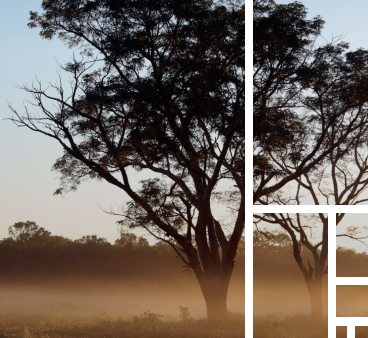
How foodscapes interact.
There are 9 different foodscapes within the mosaic of the Argentina Gran Chaco boundary.
7 of them contain croplands that are producing a total amount of 2 million tonnes of soy in the whole region.
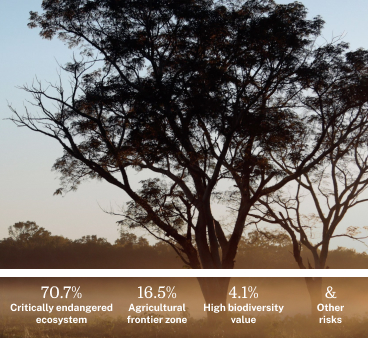
Foodscapes at risk.
20% of the Argentinian Gran Chaco is already affected by 1 or more risks. Some of these risks directly affect agriculture, others affect the integrity of the wider ecosystem.
Nature-based solutions.
We look to nature-based solutions to ensure the integrity of foodscapes and the broader ecosystem that they interact with. For example, introducing agrosilvopastoral techniques to farming – the combination of growing trees, crop production, and grazing cattle – offers the potential to protect Gran Chaco’s traditional mixed-use landscape and its globally significant biodiversity, while still producing economically essential commodities, such as soy.
NATURE-BASED SOLUTIONS
Make socioeconomic sense.
Incorporating nature-based solutions improves productivity, diversifies and increases yearly profits, and prevents land degradation. For grazing systems this would come from introducing silvopasture. For mixed livestock-cropping systems these opportunities come from adding forest buffers, silvopasture and cover crops.
NATURE-BASED SOLUTIONS
Make socioeconomic sense.
Across the Argentina Gran Chaco foodscape, mixed land use practices could nearly double farm income. However, the transition costs would be more than the current farm profit. Farms will require new sources of capital to support this transition.
NATURE-BASED SOLUTIONS
Are locally viable.
Nature-based solutions could positively impact one tenth of the Argentinian Gran Chaco, as 1.4M Ha of land is suitable for agrosilvopastoral techniques. Of that area, the majority of opportunity is in the foodscape that produces the majority of soy.
Not only would it bring financial prosperity to these farms, these techniques help make the agricultural area more resilient to climate change impacts while contributing positively to wider environmental issues, such as reducing carbon emissions and biodiversity loss.
0.0 M Ha
of land suitable for agrosilvopastoral techniques
From local to global.
Vital for many aspects of the food system, soy is no stranger to recognition. But it comes with a downside, such as land conversion and deforestation. It replaced 8.2 million hectares between 2001-2015 globally, of which 7.9 million hectares of conversion occurred in South America. Although a resilient crop, even it feels the effects of the climate crisis. To ensure the security of global yields while reducing their negative impacts, action must be taken.
0.0 M Ha
deforested land by soy globally
To guide that action, we can take inspiration from the nature-based solutions that would work in the Gran Chaco region and extrapolate these to similar foodscapes worldwide.
Extrapolating possible nature-based solutions should be done with care, as unique contexts will influence the viability and potential of solutions. However, the example of Soy in Gran Chaco offers a place to start and explore further.

Gran Chaco. Argentina.
© AlejandraPinzón
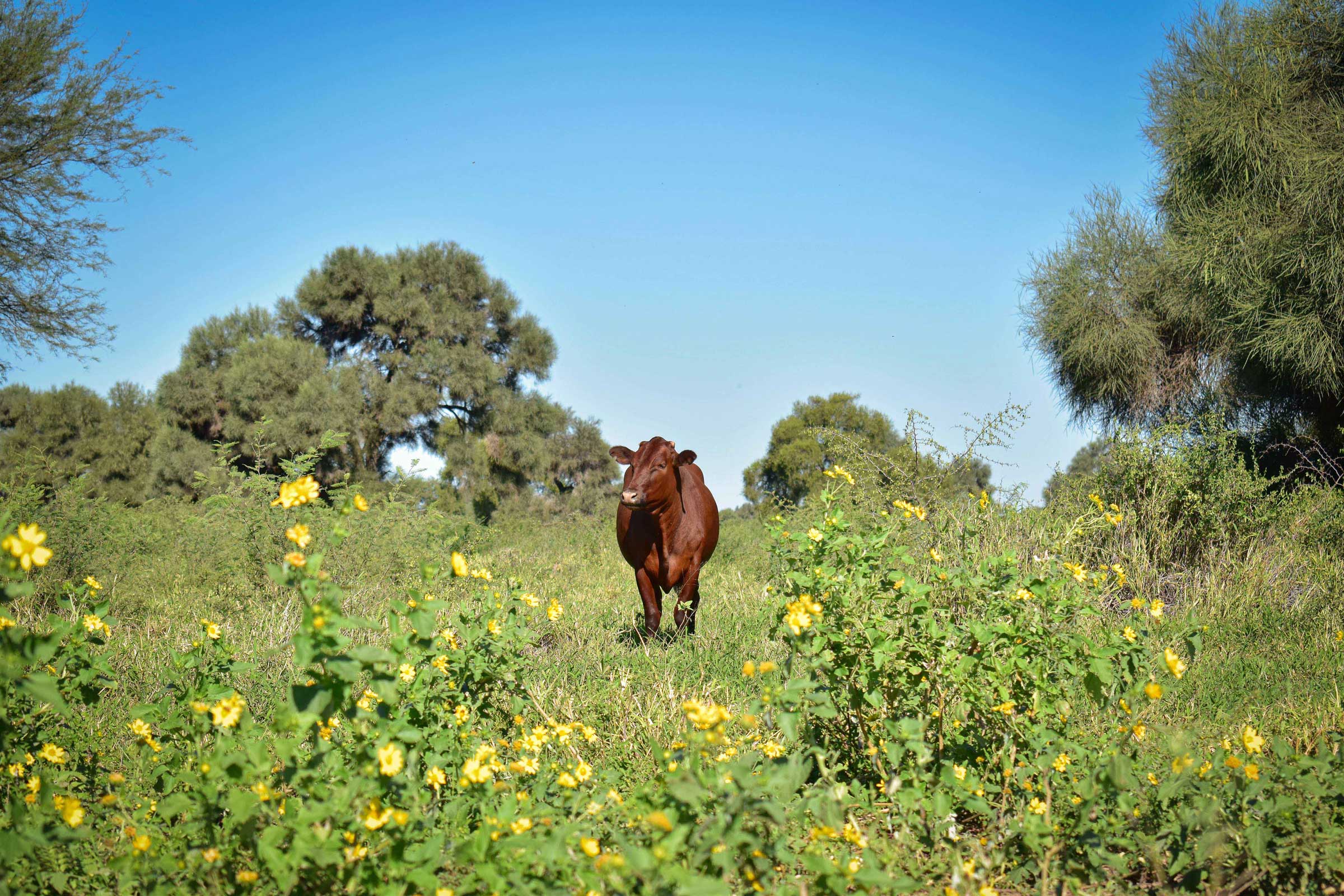
Gran Chaco. Argentina.
© AlejandraPinzón
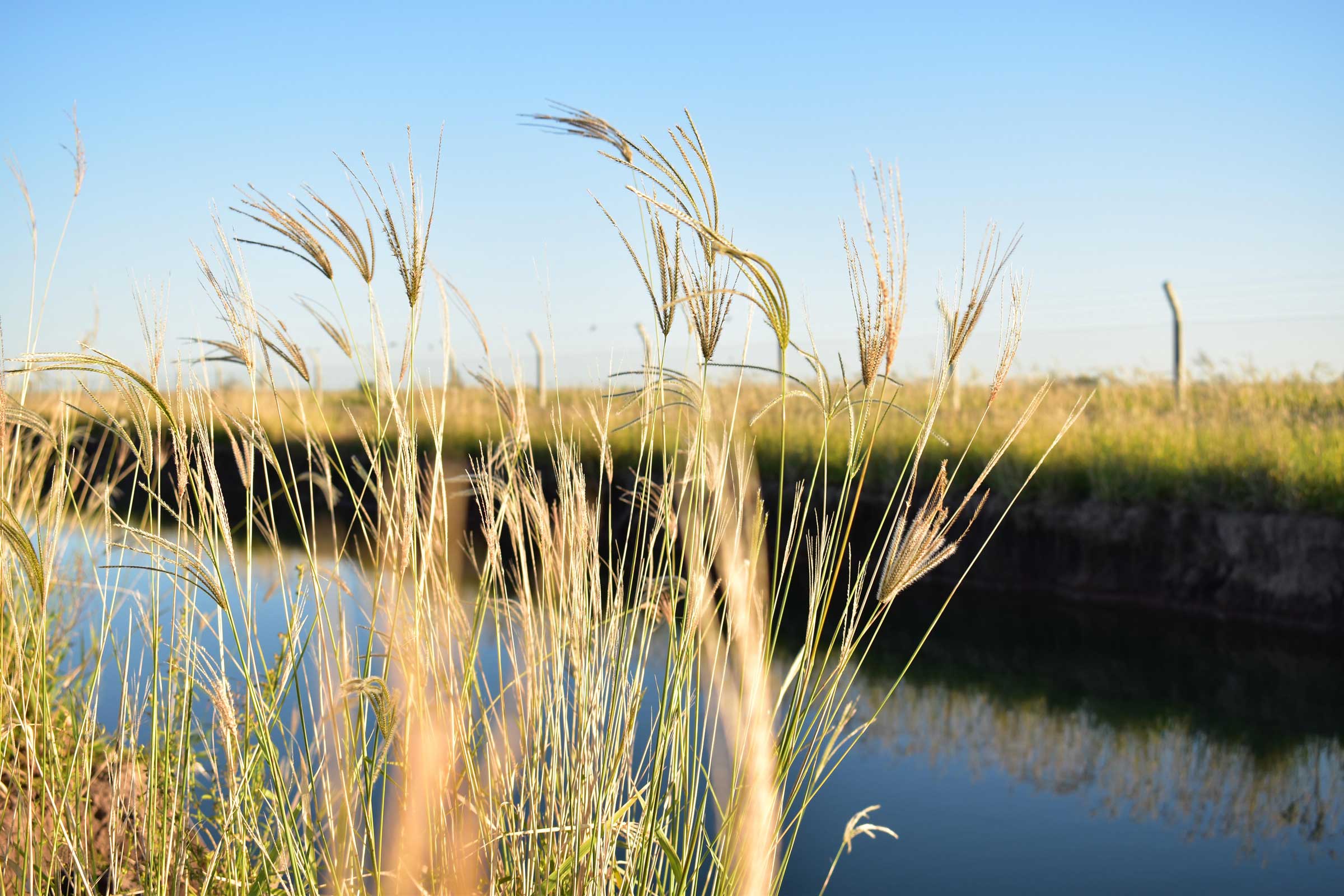
Gran Chaco. Argentina.
© AlejandraPinzón
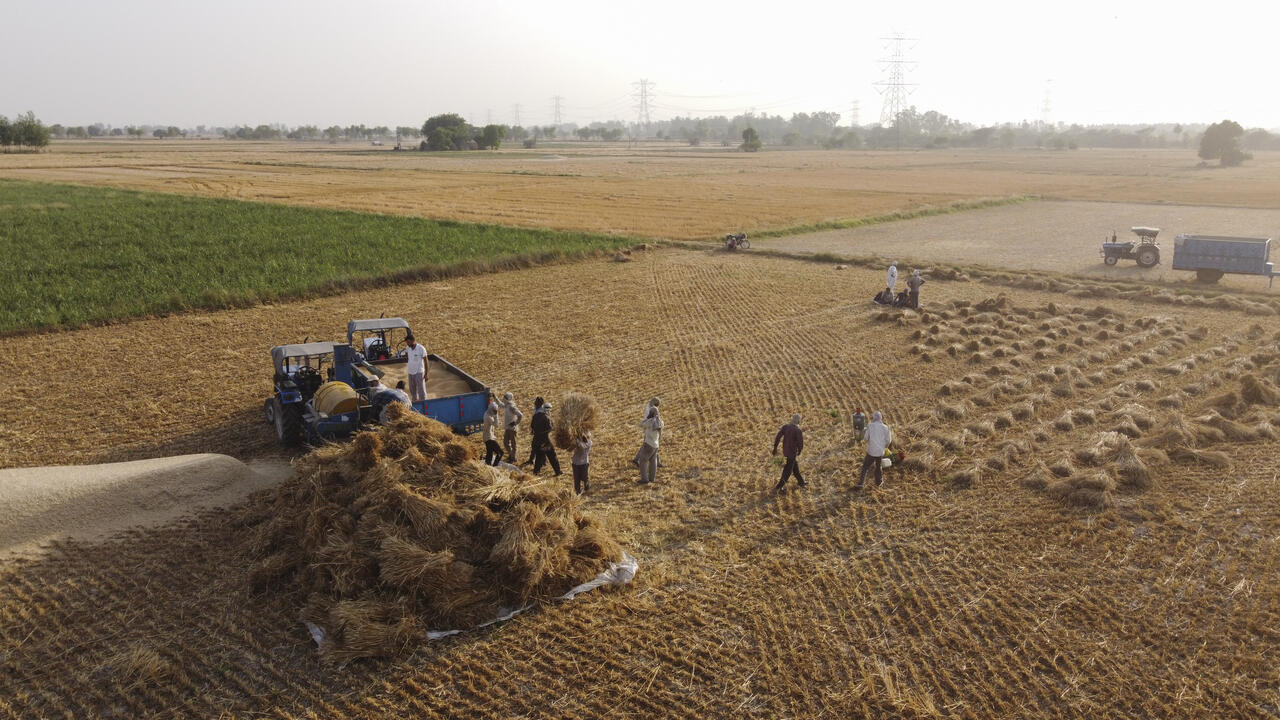
India.
© Smita Sharma
Foodscapes in action.
The Gran Chaco is a large region across South America, known for its high endemic biodiversity. The region has long accommodated a diversity of uses, such as hunting, grazing, and crop production. The Gran Chaco region of Argentina allocates 58% of its croplands to produce soy.
How foodscapes interact.
There are 9 different foodscapes within the mosaic of the Argentina Gran Chaco boundary.
7 of them contain croplands that are producing a total amount of 2 million tonnes of soy in the whole region.
Foodscapes at risk.
20% of the Argentinian Gran Chaco is already affected by 1 or more risks. Some of these risks directly affect agriculture, others affect the integrity of the wider ecosystem.
Nature-based solutions.
We look to nature-based solutions to ensure the integrity of foodscapes and the broader ecosystem that they interact with. For example, introducing agrosilvopastoral techniques to farming – the combination of growing trees, crop production, and grazing cattle – offers the potential to protect Gran Chaco’s traditional mixed-use landscape and its globally significant biodiversity, while still producing economically essential commodities, such as soy.
NATURE-BASED SOLUTIONS
Make socioeconomic sense.
Incorporating nature-based solutions improves productivity, diversifies and increases yearly profits, and prevents land degradation. For grazing systems this would come from introducing silvopasture. For mixed livestock-cropping systems these opportunities come from adding forest buffers, silvopasture and cover crops.
NATURE-BASED SOLUTIONS
Make socioeconomic sense.
Across the Argentina Gran Chaco foodscape, mixed land use practices could nearly double farm income. However, the transition costs would be more than the current farm profit. Farms will require new sources of capital to support this transition.
NATURE-BASED SOLUTIONS
Are locally viable.
Nature-based solutions could positively impact one tenth of the Argentinian Gran Chaco, as 1.4M Ha of land is suitable for agrosilvopastoral techniques. Of that area, the majority of opportunity is in the foodscape that produces the majority of soy.
Not only would it bring financial prosperity to these farms, these techniques help make the agricultural area more resilient to climate change impacts while contributing positively to wider environmental issues, such as reducing carbon emissions and biodiversity loss.
0.0 M Ha
of land suitable for agrosilvopastoral techniques
0.0 M Ha
deforested land by soy globally
From local to global.
Vital for many aspects of the food system, soy is no stranger to recognition. But it comes with a downside, such as land conversion and deforestation. It replaced 8.2 million hectares between 2001-2015 globally, of which 7.9 million hectares of conversion occurred in South America. Although a resilient crop, even it feels the effects of the climate crisis. To ensure the security of global yields while reducing their negative impacts, action must be taken.
To guide that action, we can take inspiration from the nature-based solutions that would work in the Gran Chaco region and extrapolate these to similar foodscapes worldwide.
Extrapolating possible nature-based solutions should be done with care, as unique contexts will influence the viability and potential of solutions. However, the example of Soy in Gran Chaco offers a place to start and explore further.




